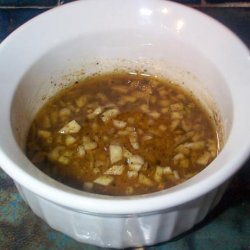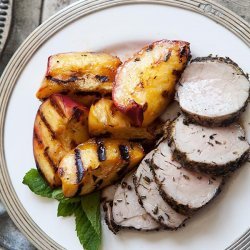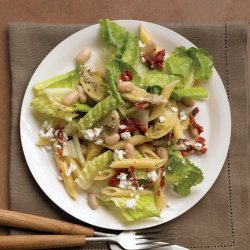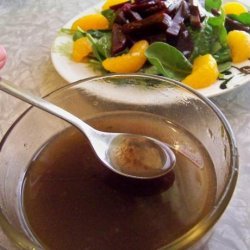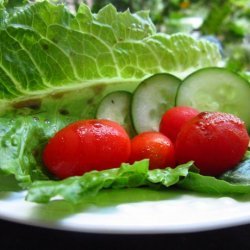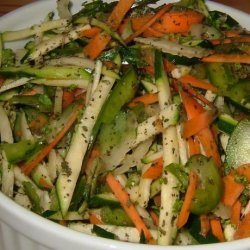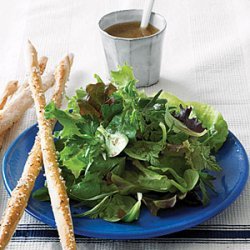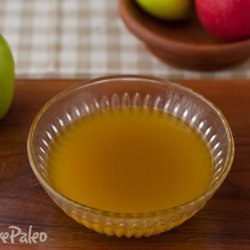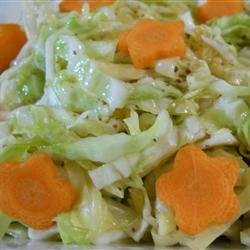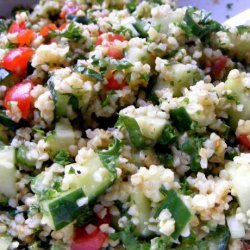Ingredients:
- about 1/4 tsp. coarse kosher salt
- about 1 tsp. dijon mustard
- about 2 tbsp. white wine vinegar
Directions:
- With the flat side of a large chef's knife, mash garlic and 1/4 tsp. salt together into a paste.
- In a small screw-top jar, combine garlic paste, 1 tsp. mustard, pepper, and 2 tbsp. vinegar. (If using shallot, let mixture stand 10 minutes.) Add oil to jar, cover, and shake vigorously until oil and vinegar emulsify.
- Taste and add more salt, vinegar, or mustard if you like. Dressing will keep, refrigerated, for up to 1 week. Bring to room temperature before using.
- Variations. Using this basic formula, you can make many other tasty dressings.
- Mix up the oil: For salads with toasted nuts and cheese, use walnut or hazelnut oil. Nut oils quickly turn rancid at room temperature, so store them in your refrigerator once you've opened them.
- Use another acid: Balsamic vinegar is good for winter salads, like those with nuts, hearty cheeses, and root vegetables. Spring salads of tender greens or asparagus can be dressed with a milder vinaigrette that uses champagne vinegar, and a vinaigrette of sherry vinegar pairs beautifully with woodsy sautéed mushrooms. Citrus juice can be substituted for the vinegar too. If using a sweeter citrus fruit, such as oranges, add a bit of lemon juice to give the dressing a tart edge (taste it to make sure there's enough of a tang). Straight lemon juice is milder than vinegar and is often used in a 1-to-1 ratio with the oil.
- Try stir-ins: This means fresh herbs of any kind, or even a tsp. or 2 of tapenade, pesto, minced anchovy, or fruit jelly (like raspberry or currant). A pinch of white or brown sugar can round out the flavor too.
- Make ahead: Double or triple the master recipe—vinaigrette will keep, refrigerated, for up to 1 week. The oil will congeal, so let the dressing come to room temperature and shake well before using.
- For excellent salad:
- Dry your lettuces well. Spin in a salad spinner or dry carefully between towels, or else you'll have a bowl of sogginess.
- Be sparing with dressing. Use less than you think you need (start with 2 tbsp. for 10 cups of salad) to help keep salad crisp. Once you've tossed and tasted, you can always add more.
- Toss well but gently. Use your clean hands; they're your best tools for coating leaves thoroughly without bruising them.
- Allow space. Use a big bowl at least twice as big as the salad. Plenty of room makes it easier to toss the contents.
- Dress at the last minute. For the crispest salad, dress and toss right before serving.
- Note: Nutritional analysis is per tbsp.
Nutrition Facts
| Amount Per 1 Serving | |||
| Calories | 756.79 Kcal (3169 kJ) | ||
| Calories from fat | 758.15 Kcal | ||
| % Daily Value* | |||
| Total Fat | 84.24g | 130% | |
|---|---|---|---|
| Sodium | 355.5mg | 15% | |
| Potassium | 34.53mg | 1% | |
| Total Carbs | 1.43g | 0% | |
| Sugars | 0.08g | 0% | |
| Dietary Fiber | 0.28g | 1% | |
| Protein | 0.41g | 1% | |
| Vitamin C | 1.3mg | 2% | |
| Iron | 0.2mg | 1% | |
| Calcium | 11.4mg | 1% | |
| Amount Per 100 g | |||
| Calories | 613.62 Kcal (2569 kJ) | ||
| Calories from fat | 614.73 Kcal | ||
| % Daily Value* | |||
| Total Fat | 68.3g | 130% | |
|---|---|---|---|
| Sodium | 288.25mg | 15% | |
| Potassium | 27.99mg | 1% | |
| Total Carbs | 1.16g | 0% | |
| Sugars | 0.07g | 0% | |
| Dietary Fiber | 0.23g | 1% | |
| Protein | 0.33g | 1% | |
| Vitamin C | 1.1mg | 2% | |
| Iron | 0.2mg | 1% | |
| Calcium | 9.3mg | 1% | |
* Percent Daily Values are based on a 2000 calorie diet. Your daily values may be higher or lower depending on your calorie needs.
Find out how many calories should you eat.
Get Your Recipe of Health!
Follow RecipeOfHealth on Facebook!







